Consumer Council surveys the market for vision correction with expert advice on how consumers should approach the various treatment: Or tho-K Lenses, PRK and LASIK
Is vision correction possible?
A proliferation of advertising claims on this subject has pointed to positive results in this relatively new field of scientific endeavour.
Consumers have been known to spend vast sum of money to seek help, medical or otherwise, on such widespread eyesight deficiencies as myopia and astigmatism.
Their motive? It could be health or beauty, or both or none.
To raise consumer awareness and understanding of this complex subject the Consumer Council has initiated a study of the treatments available to consumers in the field. The report was published today (September 15) in the latest issue (# 263) of the Council's monthly magazine 'CHOICE'.
The study was conducted with experts from the College of Ophthalmologists of Hong Kong, the Department of Optometry and Radiography of Hong Kong Polytechnic University and the Hong Kong Optometric Association. Their opinions and advice are invaluable to consumers contemplating vision correction (Orthokeratology or Ortho-K).
One technique concerns the use of Ortho-K lenses. This technique employs a special type of rigid gas permeable contact lens that serves to flatten the peak of the cornea and thereby reduces myopia and astigmatism.
According to the report, the efficacy of this treatment depends on the curvature and rigidity of the cornea, and the tightness of the upper eyelid. People with a more curved and rigid cornea, and a tighter upper eyelid are likely to receive better result.
However, the report warns that people with eye diseases (such as keratitis and conjunctivitis) or problems (such as strabismus and amblyopia) should not attempt Ortho-Klenses. And those who are in use of ordinary rigid gas permeable lenses but wish to switch to Ortho-K lenses should do so only after they have consulted eye care professionals.
Further, Ortho-K lens users are reminded of the need to wear retainer lenses for a prescribed period everyday to keep the cornea in its new shape when the required degree of myopia has been reached. Otherwise, the degree of myopia will regress to the original level.
The report also notes that the use of Ortho-K lenses to reduce the progression of myopia in children is still controversial. No report supporting such practice could be found in medical literature. Well designed studies are needed to prove this function.
The report has this advice for would-be users of Ortho-K lenses:
- Consult optometrist with good experience in prescribing rigid gas permeable contact lenses. The optometrist should have checked the health status of your eyes, the degree of myopia, the curvature of the cornea, and also the metabolism of the cornea before arriving at a decision.
- During the whole course of orthokeratology, the optometrist should continuously provide the consumer with advice on lens wearing and lens care, regular check-ups of the eyes and lens replacement.
The report also deals with laser surgery for myopia reduction, namely, PRK and LASIK. Experts from the Department of Ophthalmology and Visual Sciences of the Chinese University of Hong Kong were invited to assist in this part of the study.
The basic principle of these surgical operations is to trim the cornea with laser so that the cornea becomes flatter, effectively capturing the images of distant objects on the cornea.
Consumers are strongly advised to take into consideration the benefits and risks of such laser surgery: While there have been highly successful cases, there is no guarantee that they will be completely free of glasses or contact lenses after they have undergone the operation.
In a few cases, it is possible that their eyesight may be worse than before, and various complications may ensue. Post-operative care is therefore very important in avoiding and managing complications.
People with serious myopia should also be wary that laser surgery only changes the shape of the cornea, it could not prevent such myopia-related diseases as retinal degeneration and detachment, cataract and chronic glaucoma from arising.
People with medical or life insurance are advised to check if their policies cover such surgery as some insurance companies may consider the operation a cosmetic procedure rather than medical prescription.
It pays to shop around as goldsmiths and jewellers vary considerably in their repurchase practice
Having to sell one's precious gold ornaments and jewellery at a time of economic downturn is an experience many would rather avoid.
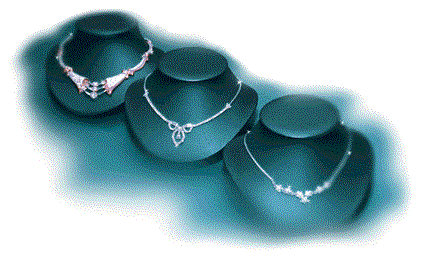
Between May and July this year, the Consumer Council received a total of 8 consumer complaints as shops refused to honour their repurchase promise or imposed stringent restrictions on such customers' requests.
To assist consumers, the Consumer Council has recently conducted a questionnaire survey on 57goldsmith and jewellery shops. 31 responded and among them 27 were used as the basis for the survey's analysis on the repurchase practice of their own merchandise.
With gold ornaments, the repurchase practice of the shops is comparatively straightforward. It follows a daily posted "Buying Price" less the commission (usually 2% of the transaction amount) and the "Refining Loss" needed in converting the ornament back to gold.
A more favourable deal is now available for customers who wish to exchange their gold for new gold ornaments. Effective September 1, a new "Exchange Price" which is set halfway between the daily "Buying Price" and "Selling Price" is introduced for the exchange of gold ornaments. The measure is contained a new voluntary guideline of the trade for its members to abide.
With jewellery such as diamond, jade and other precious stones (ruby, sapphire, emerald), the survey found considerable variations of practice among the shops. Repurchase requests for items such as gold coins, pearls, watches and custom-made jewellery are generally declined. The restrictions are many and varied :
- Jewellery for repurchase must be undamaged and intact (materials used have not been replaced) and of a valuation of more than $3,000 (special discount items are excluded).
- A time limit is imposed for repurchase - usually from 1 to 2 years and in a few cases even longer, the shortest being 1 month.
- Jewellery for exchange is applicable only if the new items fetch a higher price than that of the goods returned, and the choice is limited to only certain types of jewellery.
For diamonds, the repurchase price is, in most cases, 90% of the original value within 1 year of sale. The longer the period the bigger the reduction. For jade and other valuables, the discount rate is higher, for example, less 20% of the sale price within a year.
Besides the discount rate, almost all shops charge a labour fee of several hundred dollars to more than $1,000, and some require a commission.
Several of the shops in the survey, however, do not take into account the original price paid for by their customers. They base their valuation on the wholesale price of the jewellery at the time of the repurchase.
Consumers are advised to take note of the terms and conditions of repurchase and the charges involved. They will do well to ask the shop to list them out on the receipt to avoid unnecessary dispute.
But the survey found that most shops reserve the right to amend the terms and conditions for repurchase. At least 6 of the 27 shops in the survey did so in the past one year.
The Consumer Council has been assured by at least one shop that the change would not, in anyway, affect the rights of previous customers as it would continue to honour its repurchase pledge stipulated in the receipts.
The Hong Kong Jewellers' and Goldsmiths' Association and the Kowloon Jewellers' and Goldsmiths' Association has jointly issued a voluntary guideline on repurchase.
On the valuation of the repurchase price, the Associations have recommended that for diamond, within 3 months, it should be 80% of the original price less the labour fee, while for pearl and other jewellery items, it should be based on the market wholesale price at the time.
The Council welcomes the Associations' call for their members to honour their repurchase commitment whether orally to their customers or stated in the receipts.
Average textbook expenditure for primary pupils rise by nearly 20%
Textbook expenditure for primary school pupils has shown a high increase this year.
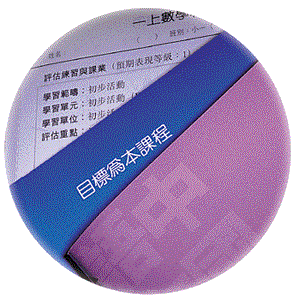
A Consumer Council's survey, based on the booklists from 25 primary schools and 51 secondary schools, has indicated an average of $1,175 in expenditure for the primary sector, representing an increase of 18.75% over last year.
But for those schools using the traditional curriculum the increase in textbook expenditure is less noticeable. For instance, the average expenditure for Primary Four textbooks was only8.23%.
The high increase in textbook expenditure was attributed to a number of reasons:
- The average price increase of generally used textbooks was 8.76%.
- As more schools implement 'Target Oriented Curriculum' (TOC) this year, apart from textbooks, students needed to purchase more worksheets. According to Education & Manpower Bureau, "some schools requested their students to purchase extra exercises and assessment exercises not on the recommended booklist issued by the Education Department".
- With the introduction of a new subject, 'Putongua', for Primary One this year, there was need to purchase textbooks or even workbooks for this subject.
- Some schools required more workbooks in English and Mathematics for Primary 5 and 6 students.
Textbook expenditure for secondary schools amounted to an average of $1,811 this year,representing an 8.21% increase over last year. The increase is more or less in line with this year's average price increase of 7.55% for secondary textbooks.
The survey also compared textbook expenditures between secondary schools with Chinese as the Medium of Instruction (MOI) and those with English as the MOI. Apart from Form I textbooks, the differences were insignificant. The expenditures for Form I textbooks averaged $2,321 and $2,094 for schools with English MOI and those with Chinese MOI respectively.
Council cautions again on leakage hazard of chemical light sticks as tests confirm chemicals inside to be harmful on contact
The Moon Festival is just three weeks away. Those chemical light sticks will be glowing a myriad of colourful lights again soon.
Last year, the Council cautioned consumers on the potential leakage of the chemical contents of some of these light sticks as a result of continuous bending after activation (light emission).
But further tests are needed to identify the chemicals and to ascertain if the content of these products is toxic or harmful.
In the September issue of 'CHOICE', it was revealed that all of the 8 chemical light sticks samples included in the test contained chemicals of low toxicity. They may be harmful by inhalation, ingestion or skin absorption and may cause irritation on contact with the skin or eyes. Symptons of exposure to the chemicals may include burning sensation, coughing and wheezing, headache, naused, vomiting, dizziness and coma, etc.
The Council found no warning of the potential hazard of the chemicals on these light sticks. The absence of bilingual warning (Chinese and English) for such products may constitute an offence under the Toys and Children's Products Safety Regulation which came into force in April this year.
The Council has referred the test findings to the Customs and Excise Department's Trading Standards Investigation Bureau for necessary action.
Parents are advised not to let children aged under 5 years to play with such chemical light stick alone without close supervision. In order to avoid leakage, users are advised not to bend the light stick again after activation.
If contacted the chemicals inside accidentally, one must rinse with copious amount of water and seek medical advice. When the light stick ceases lighting, parents should dispose it immediately to prevent abusive use by their children.
Consistency and accuracy of do-it-yourself electronic blood pressure monitors pass the test though some are better than others
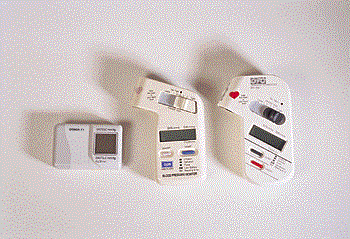
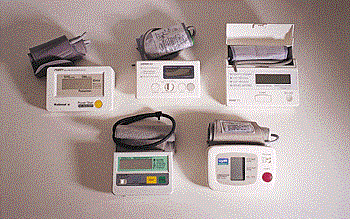
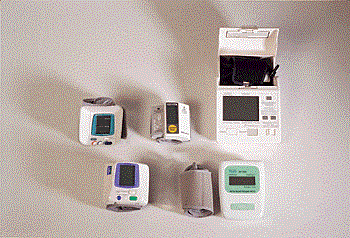
Do-it-yourself electronic blood pressure monitors have gained wide popularity among the aging population.
To assess then accuracy and consistency, the Consumer Council has initiated with the Diabetic Centre of the Queen Mary Hospital.
The test was conducted on volunteers of 18-86 years of age and with a wide range of blood pressures (hypertension, normal blood pressure and low blood pressure). Each model was tested on 30 volunteers in strict accordance with the manufacturers' instructions.
The readings of the samples were compared with those of the mercury type blood pressure meter(shygmomanometer), a reliable device with a mercury column generally used by doctors and nurses.
According to the test, some arm and wrist models performed relatively well while finger models were generally less accurate and less consistent. The best model differs from the mercury type blood pressure meter by less than 4mmHg (unit of blood pressure) on average. Finger models deviate more, with some of the systolic (the upper reading) readings deviate more than 10mmHg on average.
Blood pressures measured at the finger or wrist may differ from those measured at the arm. The discrepancies may be more prominent in individuals that have poor circulation as stated in some of the manufacturers' instructions.




